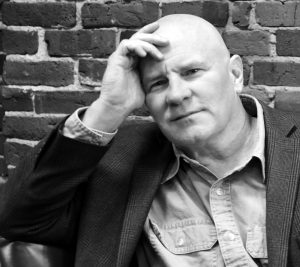 Jim Bouchard inspires, empowers and guides leaders around the world to their very best. He is constantly on tour for conference appearances and corporate workshops.
Jim Bouchard inspires, empowers and guides leaders around the world to their very best. He is constantly on tour for conference appearances and corporate workshops.
Jim is the author of several books on leadership and personal and professional development including THE SENSEI LEADER and THINK Like a BLACK BELT.
To learn more about Jim and THE SENSEI LEADER Program visit TheSenseiLeader.com
What does organizational culture mean to you?
That’s a question that might start a fight! I’ve seen a dozen different definitions. A lot depends on the focus of the person answering the question.
Like a lot of topics in leadership today, most of these definitions tend to overcomplicate the obvious. Probably the definition that can do us the most good is that culture is simply the collective behaviors, beliefs and we could say, traditions of a particular group of people. And as much as we try to depersonalize and quantify it––any organization is by definition simply a group––of people!
It gets complicated because even a small group can have a lot of different behaviors and beliefs––and let’s throw in values, interests, ambitions, and concerns. And you can’t ignore individual behaviors and beliefs. It’s very unusual today to find an organization where every individual is marching in perfect lock-step with the organization culture.
A leader has to address this diversity––and as I said, even the smallest group or business is likely to have a very diverse group of people.
Now if you’re an expert in a particular area, let’s say a technical management area like compensation, then you’re going to be very interested in how material incentives shape culture––at least that’s been the standard view for a long time. Of course now as we’re seeing 3 or 4 generations working together in the same space, leaders are starting to see that the culture of a particular group or sub-group needs to be considered if you’re going to design effective incentives.
I used that example for a reason. What comes first? The old chicken and egg question, right? That’s the problem whenever you try to study organizational culture from a technical point of view. You can certainly learn a lot by measuring and assessing the group. But you’ll never fully understand the culture until you understand the people––and that means having a conversation––face to face.
And that’s what a lot of leaders today fail to do.
What are the major determinants of organizational culture?
I’d say there are two major determinants, but it depends on the age and tradition of the culture.
In a new organization, the major determinant is usually the behaviors and beliefs of the founders. The people––or person that starts the group can’t help but imprint personal behaviors and beliefs. That’s what got the thing started in the first place!
Some leaders create a strong legacy––they leave their imprint on the culture. That can continue. However, the second major determinant can’t help but evolve the culture going forward and in a mature organization, the current culture can be vastly different than that of the founders. That’s because new individuals bring different behaviors, beliefs, experiences––biases and preferences to the group––and that’s the second major determinant…
And the behaviors and beliefs of individuals entering the group are fast becoming recognized as probably the most significant influence on culture––especially in large organizations, but as I already said, even the smallest organizations are likely to be very diverse these days. ‘
Traditionally, the focus has been on “onboarding,” which can just be biz-speak for assimilation. Now more organizations are realizing the power in accommodating––no, I don’t like that word––embracing behaviors and beliefs brought in by new people, especially as new generations join the group.
What is the role of employees in organizational culture?
I’m not sure I understand that question. If you’re talking about role in the sense of how the people in an organization influences the culture, well––that’s how the culture grows and evolves.
If you’re talking about role more in the sense of a responsibility, my answer would be a little different.
The best organizations today understand that to be effective they must develop a culture of leadership at all levels––from the front lines to the C-suite. The janitor needs to be a leader in his own area of responsibility.
Leaders––at all levels––have the strongest influence on culture. Let’s bring it home for a second. They have the strongest influence on the behaviors and beliefs of the people around them.
In an organization with effective, human-centric leadership, leaders communicate across various levels and other barriers––departments, regions––whatever. When communication is open and effective, then the over-arching organization culture can be shared and leaders at all levels embrace the responsibility of protecting and enforcing that culture.
That takes a lot of discipline. It also takes a lot of trust and respect for one another. But that’s how you prevent corrosion and corruption like a rogue division perpetrating a global fraud, like what happened in the Volkswagen diesel emissions fiasco.
What are the common problems associated with managing organizational culture?
The biggest problem is the idea that the culture can be managed! We’re back to that same process versus people problem!
Management can certainly have an influence. I hope I’m not coming across as disparaging rules, policies, and process. I’m just saying you can’t depend on them. Policies and rules reflect culture much more than they determine it. Most of the time they’re an attempt to preserve or protect a particular culture.
More than anything else, people determine culture. Their behaviors and beliefs can vary wildly from the expectations of the organization––and they can change rapidly depending on circumstances, conditions, and environment. Philip Zimbardo gave us a pretty good look at that with his Stanford Prison Experiments.
Anyway––you can’t manage people. You lead people––and then only if they’re willing.
That leads us to a big threat, and it’s more common in large or wide-ranging organizations:
Sub-groups can establish sub-cultures that can stray dangerously from an organization’s best purpose and intent. This is where you see problems like the recent scandals at Wells Fargo and Volkswagen. Or the iconic collapse of Enron.
They all promoted positive values and created policies to assure ethical behaviors–-so what happened?
Individuals established sub-cultures that ran contrary to the established over-arching culture. At least if you believe what some leaders say when they tell us they didn’t know about these problems! They should have!
I keep beating the same drum, but it needs beating! Management is about the process. Leadership is about people––and a culture is a product of the people, not the process.
The process part is the rules and policies. And that is necessary and can be helpful. But every rule ever written was made to be broken––and people will break them under the right circumstances. Contrary to popular belief, this isn’t always because they’re greedy or totally self-interested. It can happen when people are afraid too––when leaders, or in this case, I’d withhold that designation and say “managers” or even dictators try to get results through fear, force or coercion.
To make it simple, if you tell a group of sales people at a phone bank that the top and only priority is to open more checking accounts or they’ll be out on the street––they will open accounts and some will break the rules to accomplish save their jobs. At that point, no rule or policy or poster about organizational values is going to stop them. They’re in survival mode––and it makes sense.
Now before I leave this topic, I want to emphasize one important point. There isn’t anything more important than this.
Lead by example.
People follow examples much more enthusiastically than they do orders. If you want to inspire others to their very best, nothing is more powerful or inspirational than your example.
Forget about managing your culture. Lead it––model the behavior you expect from others.
That’s the most effective way to establish, protect and preserve a culture.
What are the ways to innovate company culture? Any best practices to share.
Well––I think I just shared the best one!
I’ll say it again: lead by example.
Now you’re stepping into my wheelhouse! This is the sole focus of my program. I don’t teach technical management. My entire focus is on the deepest human aspects of being a leader.
As I’ve been saying all along––culture is the sum of the behaviors and beliefs of the people who make up the organization. To preserve, promote and evolve or as you said, innovate that culture the leader’s role is to be the living example of that culture.
The leader reflects and personifies the best of what you want to preserve. If you want to innovate the culture or change it, the leader starts by engaging, by listening and learning, by actively soliciting input from all levels.
Too often top leaders craft a plan, then draw up some rules and policies, then issue orders to implement those policies. After that, the big task was to get the “buy-in.”
Forget buy in. Start askin’! And I’m not making a joke here.
The most effective leaders do three things above all else––and they do these things very well:
They inspire, empower and guide. That’s how you bring out the best in others.
If you want to inspire change, be inspirational! I’m not making a joke here either. Be enthusiastic. In every way, you can express your commitment and belief in the change you’re trying to implement. Create a vision for that change and share it––and be the change you want to see in others.
Empower––we just talked about that. If you want to make meaningful change, get people involved early. Get as many people involved in the design and implementation process as possible. Then reach out for more input! General Patton said:
“Generals and staff officers don’t win wars! Soldiers win wars! The soldier must know what he is doing at all times. He must know the objective.”
And guide. You’re not doing it alone. As I just said, your power expands by empowering others.
That doesn’t mean pushing. It means leading––teaching, coaching and mentoring. It means acknowledging, supporting and cultivating the talents and abilities of the people you serve.
Inspire, empower––guide. That’s how you establish, protect and evolve a strong and positive culture.
Simple. Not easy!

1 thoughts on “Jim Bouchard, Speaker, Author”